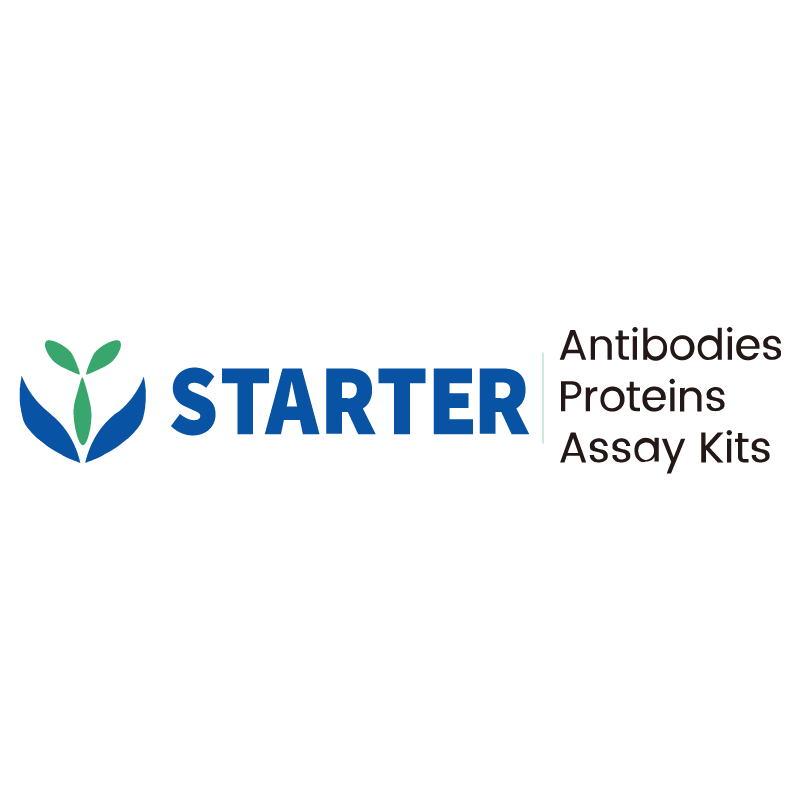WB result of phospho-GCN2 (T899) Recombinant Rabbit mAb
Primary antibody: phospho-GCN2 (T899) Recombinant Rabbit mAb at 1/1000 dilution
Lane 1: untreated NIH/3T3 whole cell lysate 20 µg
Lane 2: NIH/3T3 starve 3 hours, then treated with 100 nM Calyculin A for 30 minutes whole cell lysate 20 µg
Secondary antibody: Goat Anti-rabbit IgG, (H+L), HRP conjugated at 1/10000 dilution
Predicted MW: 187 kDa
Observed MW: 220 kDa
Product Details
Product Details
Product Specification
| Host | Rabbit |
| Antigen | Phospho-GCN2 (T899) |
| Synonyms | eIF-2-alpha kinase GCN2; Eukaryotic translation initiation factor 2-alpha kinase 4; GCN2-like protein; EIF2AK4; KIAA1338 |
| Immunogen | Synthetic Peptide |
| Location | Cytoplasm |
| Accession | Q9P2K8 |
| Clone Number | S-1665-19 |
| Antibody Type | Recombinant mAb |
| Isotype | IgG |
| Application | WB, IHC-P |
| Reactivity | Ms, Rt |
| Purification | Protein A |
| Concentration | 0.5 mg/ml |
| Conjugation | Unconjugated |
| Physical Appearance | Liquid |
| Storage Buffer | PBS, 40% Glycerol, 0.05% BSA, 0.03% Proclin 300 |
| Stability & Storage | 12 months from date of receipt / reconstitution, -20 °C as supplied |
Dilution
| application | dilution | species |
| Dot Blot | 1:1000 | |
| WB | 1:1000 | Ms |
| IHC-P | 1:200 | Rt |
Background
GCN2, or General Control Nonderepressible-2, is a kinase belonging to the protein kinase family. It is known for its ability to phosphorylate the alpha subunit of the eukaryotic translation initiation factor 2 (eIF2α), thereby downregulating protein synthesis under various cellular stress conditions. GCN2 is activated in response to amino acid deprivation and binds to uncharged tRNAs, and it may also be activated under conditions of glucose deprivation and viral infections. Phosphorylated GCN2 (phospho T899) is a key regulatory point for the kinase activity of GCN2. When GCN2 is phosphorylated at the Thr899 site, it can more effectively phosphorylate Ser51 of eIF2α, which in turn inhibits global protein translation rates and reduces the consumption of amino acids within the cell. This mechanism makes GCN2 an important sensor and regulator in the cellular response to amino acid starvation and other stress conditions. In the tumor microenvironment, the activation of GCN2 is associated with the modulation of immune responses. Studies have shown that the activation of GCN2 can lead to T cell anergy and apoptosis, enhance myeloid-derived suppressor cell (MDSC)-dependent immunosuppression, and promote tumor cell survival. Therefore, the inhibition of GCN2 may have direct anti-cancer effects and immune-activating effects, making it a potential therapeutic target for cancer treatment.
Picture
Picture
Western Blot
Dot Blot
Dot blot result of phospho-GCN2 (T899) Recombinant Rabbit mAb
Lane 1: GCN2 (T899) phospho peptide
Lane 2: GCN2 unmodified peptide
Primary antibody: phospho-GCN2 (T899) Recombinant Rabbit mAb at 1/1000 dilution
Secondary antibody: Goat Anti-rabbit IgG, (H+L), HRP conjugated at 1/10000 dilutio
Immunohistochemistry
IHC shows positive staining in paraffin-embedded mouse liver and negative staining in mouse liver treated with phosphatase. Anti- Phospho-GCN2 (T899) antibody was used at 1/200 dilution, followed by a HRP Polymer for Mouse & Rabbit IgG (ready to use). Counterstained with hematoxylin. Heat mediated antigen retrieval with Tris/EDTA buffer pH9.0 was performed before commencing with IHC staining protocol.
IHC shows positive staining in paraffin-embedded rat kidney and negative staining in rat kidney treated with phosphatase. Anti- Phospho-GCN2 (T899) antibody was used at 1/200 dilution, followed by a HRP Polymer for Mouse & Rabbit IgG (ready to use). Counterstained with hematoxylin. Heat mediated antigen retrieval with Tris/EDTA buffer pH9.0 was performed before commencing with IHC staining protocol.
IHC shows positive staining in paraffin-embedded rat testis and negative staining in rat testis treated with phosphatase. Anti- Phospho-GCN2 (T899) antibody was used at 1/200 dilution, followed by a HRP Polymer for Mouse & Rabbit IgG (ready to use). Counterstained with hematoxylin. Heat mediated antigen retrieval with Tris/EDTA buffer pH9.0 was performed before commencing with IHC staining protocol.


